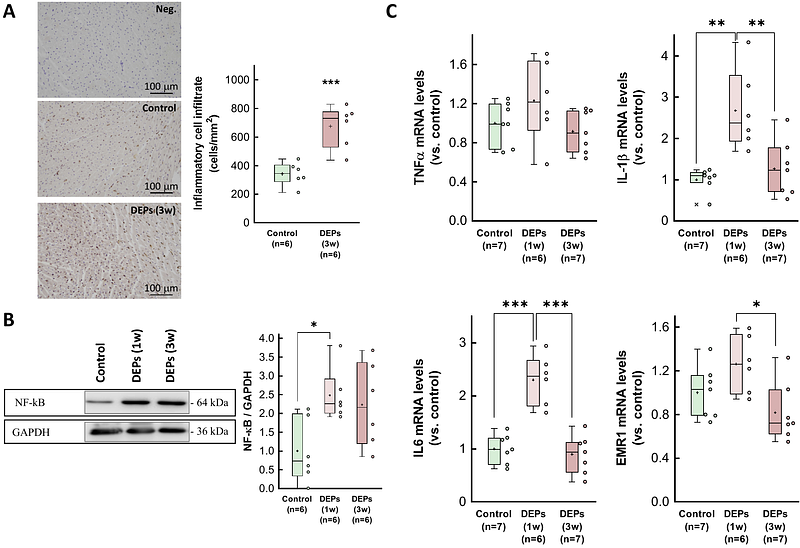CERIUM OXIDE NANOPARTICLES ATTENUATE THE PRO-ARRHYTHMIC EFFECT OF DIESEL EXHAUST PARTICLES IN ISOLATED RAT HEARTS BY REDUCING OXIDATIVE STRESS.

CERIUM OXIDE NANOPARTICLES ATTENUATE THE PRO-ARRHYTHMIC EFFECT OF DIESEL EXHAUST PARTICLES IN ISOLATED RAT HEARTS BY REDUCING OXIDATIVE STRESS.
Ganse, F. G.; Ernst, L. M.; Rodriguez, C.; Ruiz-Meana, M.; Inserte, J.; Martinez-Gonzalez, J.; Briones, A. M.; Garcia-Redondo, A. B.; Consegal, M.; Miro-Casas, E.; Yanez-Bisbe, L.; Pomposo, A.; Prades-Martinez, M.; Ferreira-Gonzalez, I.; Puntes, V.; Benito, B.; Rodriguez-Sinovas, A.
AbstractIntroduction. Epidemiological studies suggest an association between air pollution and ventricular arrhythmias, with reactive oxygen species (ROS) playing a crucial role. However, the causal relationship and long-term effects remain uncertain, and the effectiveness of interventions aimed at reducing ROS requires further investigation. Aims. To evaluate the effects of chronic exposure to diesel exhaust particles (DEPs) on ventricular arrhythmogenesis, explore the underlying mechanisms, and assess the potential of cerium oxide nanoparticles (CeO2NP) as a ROS-detoxifying intervention. Methods. Sprague-Dawley rats underwent intratracheal instillation of saline without or with DEPs (7.5 g/Kg for 1-3 weeks). Ventricular arrhythmia inducibility was then assessed in isolated hearts using a protocol of programmed electrical stimulation. Cardiac hypertrophy, collagen content, inflammation and oxidative stress were analyzed using histology, Western blot, RT-PCR, and measurement of malondialdehyde content. The potential protective effects of CeO2NP (0.5 mg/Kg/week, i.p.) were also tested. Results. DEP exposure for 3 weeks increased the incidence and duration of sustained ventricular tachyarrhythmias (VTs), a finding that correlated with a moderate increase in interstitial collagen (from 3.11{+/-}0.12% in controls to 4.80{+/-}0.21% in DEP-exposed rats, p<0.001), and an early upregulation in the expression of collagen and other fibrotic and inflammatory markers. These effects associated with prolonged QRS complex and QTc intervals, and enhanced malondialdehyde content (356.7{+/-}21.2 vs. 455.3{+/-}17.2 micromol/g tissue, p=0.0066) after 3 weeks. CeO2NP treatment reduced oxidative stress and myocardial fibrosis, reversed electrocardiographic changes and attenuated DEP-induced pro-arrhythmic effects. Conclusion. DEP exposure increases the incidence and duration of sustained VTs, collagen deposition and oxidative stress in rats. Treatment with CeO2NP attenuate these effects, arising as a potential novel strategy to mitigate the deleterious effects of air pollution.